

 Terroir wine, industrial wine, natural wine, or technical wine?
Terroir wine, industrial wine, natural wine, or technical wine?
Terroir wines are often said to be the opposite of industrial wines (or volume wines). In short, terroir wines are wines where you recognize the origin and industrial ones are wines where you do not (and that are produced in large volumes). However, it is not always that easy to identify the origin in a blind tasting. Even if the wine in the glass is supposedly a terroir wine.
So I think a better definition of terroir wine could be a wine with character, personality, freshness and structure and no mushy softness. And it is very likely that these qualities in part come from the work in the vineyard, although it might not be apparent when you drink the wine where this vineyard is located.
So a wine can have a nice character even though you can’t guess where it comes from. This is all the more obvious when you drink a so-called “natural wine”. Even if you like the wine (not always obvious), you are most of the time totally incapable of guessing neither the grape nor the geographic origin.
Rather, what you do recognize is the work in the cellar: skin contact for a few weeks (if it’s a white wine), deliberate oxidation, tiny quantities of sulphur.
When you cannot identify the origin of a wine but you do recognize the work in the cellar, people often talk about “technical” wines. So in that respect a “natural” wine is more of a technical wine than conventional wines. The “natural” wine is more of a reflection of the techniques used in the cellar to create the wine that of the origin or of the grape variety.
Some producers consider their rosé to be a technical wine. It requires a lot of technical skills in the cellar to get exactly the colour they want. Many winemakers say that rosé is the wine that is most difficult to make (and not the easiest, as we heard someone – not a winemaker – say recently).
It is a fact that it is often difficult to recognize where a “natural” wine comes from. The total absence or very low levels of sulphur erase the character of the grape and of the origin. Many wine producers who make wines without sulphur agree. As well as many who make wine with sulphur. We have in recent weeks met several winemaker who’ve had comments like this: “’natural’ wines have above all a character of, well, not of the region it comes from but tastes more just like ‘natural’ wine.”
I’m not saying this is necessarily negative, but it’s good to know. So that you have something to blame for your bad guessing… And if you want the best expression of origin, perhaps you should look for something else.
Wine tours in the autumn and winter
Take a few moments to have a look at the coming season’s and the winter wine tour program. Several exciting tours are on the schedule at harvest time: Bordeaux, Piedmont (with truffles), Alentejo & Setubal. And when it is harvest down south also Chile-Argentina and South Africa! Some tours are already fully booked so don’t wait!
And finally: please take a moment to “like” BKWine Magazine and BKWine Tours on Facebook.
Britt & Per
PS: Recommend to your friends to read the Brief !
What’s on at BKWine Tours
Autumn / fall 2017
- Bordeaux, September 27 – October 1
- Piedmont, wine and truffles, October 18-22
- Douro Valley, Portugal, October 18-22 (fully booked)
- Alentejo and Setubal, October 25-29
Winter 2018
- Chile and Argentina, January 27 – February 11, 2018
- South Africa, February 23 – March 5, 2018 (with possible safari and golf add-on)
For more information please contact us on email or on phone (we’re on French time), or go to our wine travel site on www.bkwinetours.com!We also make custom designed wine tours – on-demand tours for you and a group of friends, for your company (maybe to scout new winegrowers?), for a special event… We can combine winery visits and wine touring with other activities: gastronomic workshops, visit to an oyster farm, truffles hunting, cheese making, and more. More info on the custom designed and bespoke BKWine wine tours and travel here!
Read our book(s)
We have written several wine books, nine at the last count. One of them has been translated to English; the others are (so far) only available in Swedish. This is the one that is available in English: Biodynamic, Organic and Natural Winemaking, Sustainable Viticulture and Viniculture
All our books are on wine, but on different subjects: wines of the Languedoc, wine growing and wine making, the wines of France, Tuscany, Bordeaux, Piedmont, Burgundy, Champagne. Several have won prestigeous prizes and awards. Read more on our wine books.
From the World of Wine
In Brief
In short, news and stuff from the world of wine.
Saumur Brut without sulphur from Ackerman
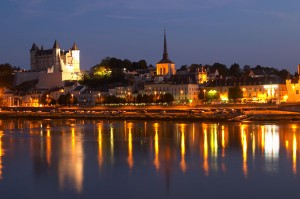 Ackerman is a major producer of sparkling wine in the Loire Valley. Now the company launches its first bubbly chenin blanc without added sulphur (Saumur Brut l’Esprit nature, 11.50 euros on site). But that does not mean that these wines automatically fit into the “natural wine” category. Certainly, the absence of sulphur is important to the “natural wine” movement. But Ackerman’s winemaker produces these wines with the help of various technical tools, like cooling system, inert gases, filtration and electro-dialysis for stabilization, and others. The must and the wine are at all times protected from oxygen. During the harvest a specific yeast is added to the grapes to avoid unwanted bacteria to develop. The aim is to get a completely stable and flawless wine. Many “natural” wine producers would question these production aids. But on the other hand, they may instead be forced to use sulphur, albeit in small quantities. It is not easy to be “natural”. Read more ackerman.fr
Ackerman is a major producer of sparkling wine in the Loire Valley. Now the company launches its first bubbly chenin blanc without added sulphur (Saumur Brut l’Esprit nature, 11.50 euros on site). But that does not mean that these wines automatically fit into the “natural wine” category. Certainly, the absence of sulphur is important to the “natural wine” movement. But Ackerman’s winemaker produces these wines with the help of various technical tools, like cooling system, inert gases, filtration and electro-dialysis for stabilization, and others. The must and the wine are at all times protected from oxygen. During the harvest a specific yeast is added to the grapes to avoid unwanted bacteria to develop. The aim is to get a completely stable and flawless wine. Many “natural” wine producers would question these production aids. But on the other hand, they may instead be forced to use sulphur, albeit in small quantities. It is not easy to be “natural”. Read more ackerman.fr
Rioja, now with single vineyards on the label
Henceforth it is allowed for Rioja to indicate the name of the vineyard from which the grapes come from on the label. Many producers have impatiently been waiting for this. Consumers want, says the Rioja producers, to have this precise information. The traditional Rioja categories will remain: joven, crianza, reserva and gran reserva. The single vineyard name is just an addition. But some rules must be followed. Among other things, the vineyard must have well-defined limits and belong to the producer since a certain number of years. The yield should be at least 20% below what is allowed for the region and the grapes must be picked manually. Perhaps there will be even more geographical information on the Rioja bottles in the near future. It is now being discussed whether sub regions and villages may also be mentioned on the labels. Why is it so complicated to take these decisions? Today wine is about geography and terroir, not how long time the wine has spent in the oak barrels. It seems that everyone else except Rioja has understood this. Read more riojawine.com
Keep an eye on the weather and limit your spraying
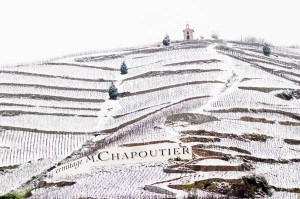 Most (all?) wine growers today aim for less spraying in the vineyard. Regardless of the products you use when spraying. There are various preventive measures that facilitate this goal. For example, keeping an eye on the weather. To do this, a weather station will help. The company Cooptain has recently installed eight weather stations in the Crozes Hermitage in the northern Rhône Valley. These weather stations measure temperature, humidity, air pressure, wind speed, wind direction, moisture in the foliage, and more. The wine growers in the region pay a fee, around 500 euros a year, and then they have access to all this information on their computers or phones. The more growers know about the weather situation, the better they can plan their spraying. And spray only when necessary. And at the right time. Read more on this new weather monitoring: mon-viti.com
Most (all?) wine growers today aim for less spraying in the vineyard. Regardless of the products you use when spraying. There are various preventive measures that facilitate this goal. For example, keeping an eye on the weather. To do this, a weather station will help. The company Cooptain has recently installed eight weather stations in the Crozes Hermitage in the northern Rhône Valley. These weather stations measure temperature, humidity, air pressure, wind speed, wind direction, moisture in the foliage, and more. The wine growers in the region pay a fee, around 500 euros a year, and then they have access to all this information on their computers or phones. The more growers know about the weather situation, the better they can plan their spraying. And spray only when necessary. And at the right time. Read more on this new weather monitoring: mon-viti.com
How the rosé trend is killing one of France’s great wines: red Bandol
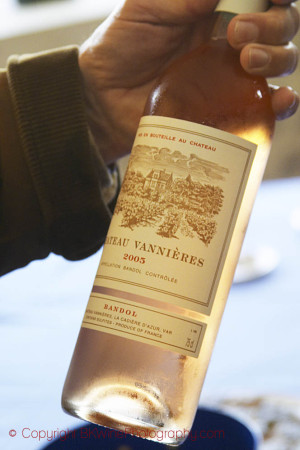 I was a bit shocked the other day when I saw a video clip with Etienne Portalis from Château Pradeaux, one of the well-known wine estates in Bandol. Bandol has always, for me, been the great red wine of Provence. A structured, high-quality red wine, surrounded by a sea of (not always very exciting) rosé wines.
I was a bit shocked the other day when I saw a video clip with Etienne Portalis from Château Pradeaux, one of the well-known wine estates in Bandol. Bandol has always, for me, been the great red wine of Provence. A structured, high-quality red wine, surrounded by a sea of (not always very exciting) rosé wines.
So no wonder I was shocked to hear Etienne Portalis say that Bandol in 20 years has gone from 80% red and 20% rosé to now being 80% rosé and only 20% red! I have not checked that the numbers are correct but have no reason to doubt him. (Wikipedia says 64% rosé but that number is probably a few years old.)
What a waste! Are there not enough rosé wines in Provence anyway? A fighting cry to all Bandol growers: do not waste your lovely mourvèdre grapes on rosé! And a fighting cry to all rosé drinkers: do also explore the delicious reds and whites (!) from Provence! Read more: larvf.com
Proposals for new rules for organic wines upset the wine growers
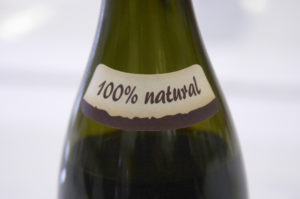 The EU rules for organic farming are being reviewed and discussions are apparently in the final phase. Several proposals have upset the French (and also other countries’) organic growers. One of the new proposals is that annual controls should be reduced to every two years and perhaps even less frequent. Organic growers worry about the risk of losing consumer confidence. They want to be controlled frequently.
The EU rules for organic farming are being reviewed and discussions are apparently in the final phase. Several proposals have upset the French (and also other countries’) organic growers. One of the new proposals is that annual controls should be reduced to every two years and perhaps even less frequent. Organic growers worry about the risk of losing consumer confidence. They want to be controlled frequently.
Another proposal that is not popular is to set limits for maximum amount of pesticide residues that may be found in organic products before they lose their organic label. The organic growers say that there is a risk of contamination (from nearby conventional farms whose spraying may be windblown to the organic field) because such a large proportion of agriculture is conventional. Nor do they like that different EU countries apparently will be able to set different limits. A proposal to reduce the limit for copper spraying from 6 kilograms of copper per year and per hectare to 3 or 4 kilograms also upsets. The general perception is that 6 kilos are needed. To be continued. Read more: vitisphere.com
“Foreign” wines in France increase the market share
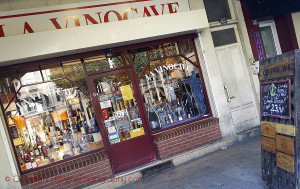 In France you drink French wines. With the variety that exists in this huge wine country, you never get tired of French wines. But the fact is that the French drink more and more foreign wines. An study on wine sales in big grocery stores (where most wines are sold) shows a rise in recent years for non-French wines. These now represent 7% in volume and 4% in value. Spain dominates and without having examined the matter in detail, we guess that it is mostly cheap wines that are imported from the southern neighbour. Other countries with significant volumes are Italy, Portugal, Morocco and South Africa. In smaller volumes, wines from most wine countries around the world are sold, but mostly in smaller, specialized wine stores.
In France you drink French wines. With the variety that exists in this huge wine country, you never get tired of French wines. But the fact is that the French drink more and more foreign wines. An study on wine sales in big grocery stores (where most wines are sold) shows a rise in recent years for non-French wines. These now represent 7% in volume and 4% in value. Spain dominates and without having examined the matter in detail, we guess that it is mostly cheap wines that are imported from the southern neighbour. Other countries with significant volumes are Italy, Portugal, Morocco and South Africa. In smaller volumes, wines from most wine countries around the world are sold, but mostly in smaller, specialized wine stores.
From our own (unscientific) experience it is clear that today you can find much more “foreign” wines at all price levels than 10 years ago. Yet another example of the increasingly international wine market; today 40% of all wine is consumed in another country than where it was made. In 2000 the number was 20%.
Features
Features that we have published during the past month, with lots of reading for you.
New South Africa: five exciting producers | Britt on Forbes
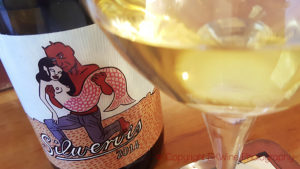 “There is a wine revolution quietly going on in South Africa. Or more correctly, a second revolution. The first one was when apartheid ended and the KVW iron grip on the wine sector also came to an end. That led to the birth of the modern wine industry in South Africa, where today you can find many very exiting wineries producing outstanding wines. The “revolution” that is happening now, since a few years back, is perhaps less overwhelming and on a smaller scale, but it is also very interesting. There is a new breed of winemakers experimenting with new styles, new grape varieties (or actually old!), and working with techniques that can sometimes be on a knife’s edge.”
“There is a wine revolution quietly going on in South Africa. Or more correctly, a second revolution. The first one was when apartheid ended and the KVW iron grip on the wine sector also came to an end. That led to the birth of the modern wine industry in South Africa, where today you can find many very exiting wineries producing outstanding wines. The “revolution” that is happening now, since a few years back, is perhaps less overwhelming and on a smaller scale, but it is also very interesting. There is a new breed of winemakers experimenting with new styles, new grape varieties (or actually old!), and working with techniques that can sometimes be on a knife’s edge.”
Read more on this revolution on BKWine Magazine in Britt’s article originally published on Forbes: Five “natural” wines from South Africa that are really good! | Britt on Forbes.
Experience more of this fantastic wine country on the wine tour to South Africa with BKWine! And meet both Britt and Per in Cape Town.
Discover ”vin de france”, the new generation French wines
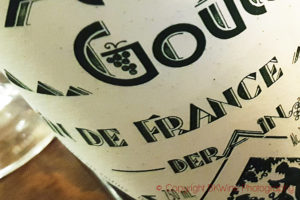 Vin de france, roughly speaking, has no other requirements than that the wine should be produced in France. It may be a made from a single variety or a blend of different grapes varieties. The wine may, if applicable, have grape variety and vintage mentioned on the label. A control system exists to ensure compliance with the rules. The vin de france category gives producers new opportunities to mix grapes from different parts of France in the same wine. You can also mix in grape varieties that are not allowed within the AOP system. For example, use syrah in a “Bordeaux blend” produced in Bordeaux.
Vin de france, roughly speaking, has no other requirements than that the wine should be produced in France. It may be a made from a single variety or a blend of different grapes varieties. The wine may, if applicable, have grape variety and vintage mentioned on the label. A control system exists to ensure compliance with the rules. The vin de france category gives producers new opportunities to mix grapes from different parts of France in the same wine. You can also mix in grape varieties that are not allowed within the AOP system. For example, use syrah in a “Bordeaux blend” produced in Bordeaux.
Read more in Carl-Erik Kanne’s article on BKWine Magazine: New “vin de france”, an opportunity for new styles and new markets.
Grower’s champagnes, the new trend, with four recommendations
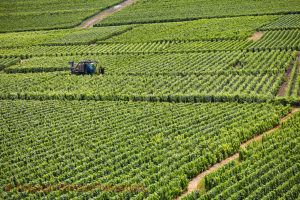 “The tasting was solely of ‘growers’ champagnes’, as opposed to ‘house champagnes’. A ‘house’ (such as Pommery, Mumm, Dom Pérignon et al.) is in this context a producer who mainly makes his wine from purchased grapes. There are around 300 houses of different sizes. It is also common for grape growers to be part of a cooperative. There are around 135 cooperatives in Champagne (code RC = récoltant-cooperateur). The members of cooperatives in Champagne own about 35% of the champagne area.”
“The tasting was solely of ‘growers’ champagnes’, as opposed to ‘house champagnes’. A ‘house’ (such as Pommery, Mumm, Dom Pérignon et al.) is in this context a producer who mainly makes his wine from purchased grapes. There are around 300 houses of different sizes. It is also common for grape growers to be part of a cooperative. There are around 135 cooperatives in Champagne (code RC = récoltant-cooperateur). The members of cooperatives in Champagne own about 35% of the champagne area.”
BKWine Magazine’s Henrik Stadler reports from an interesting tasting at the French ambassador’s residence: Champagne recommendations: four grower champagnes with character and individuality.
Wine since 1453: Marchsi Mazze on Castello di Fonterutoli
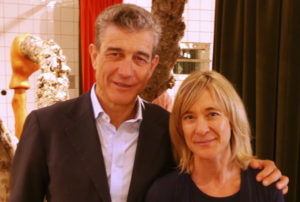 “The Mazzei family has been active at their main property Castello Di Fonterutoli since 1435. More recently they have expanded operations with Belguardo in Maremma and Zisola in Sicily. Today, Francesco wanted to show some older vintages of the company’s “second label” Fonterutoli, and two new wines on the Swedish market, a rosé wine and Concerto Di Fonterutoli, launched in 1981 that together with Siepi are the company’s two prestige cuvées of super Tuscan style.”
“The Mazzei family has been active at their main property Castello Di Fonterutoli since 1435. More recently they have expanded operations with Belguardo in Maremma and Zisola in Sicily. Today, Francesco wanted to show some older vintages of the company’s “second label” Fonterutoli, and two new wines on the Swedish market, a rosé wine and Concerto Di Fonterutoli, launched in 1981 that together with Siepi are the company’s two prestige cuvées of super Tuscan style.”
Read more on these wines in Roland Eriksson’s article on BKWine Magazine: Marchesi Mazzei in Tuscany shows some older vintages of Fonterutoli, Concerto and rosé.
Wine tours
Some information about current and future wine tours with BKWine.
Enjoy a world-class BKWine wine tour this autumn or winter
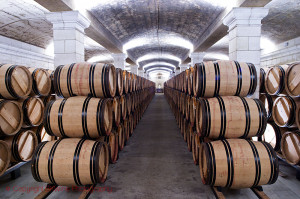 We have prepared a fabulous selection of wine tours for you to enjoy either in the autumn or in winter. Why not escape from the dreary cold and darkness for a few days or a bit more to a lovely wine country on a trip filled with excellent wines and delicious food. You can choose between France, Portugal, Italy, Argentina & Chile and South Africa. You will get top-class wine guiding and an experience of a lifetime. Here’s what’s on the program:
We have prepared a fabulous selection of wine tours for you to enjoy either in the autumn or in winter. Why not escape from the dreary cold and darkness for a few days or a bit more to a lovely wine country on a trip filled with excellent wines and delicious food. You can choose between France, Portugal, Italy, Argentina & Chile and South Africa. You will get top-class wine guiding and an experience of a lifetime. Here’s what’s on the program:
- Bordeaux, 27 September – 1 October
- Piedmont, Wine, Food and Truffles, October 18-22
- Alentejo and Setubal, Portugal, 25-29 October
- Argentina & Chile, 27 January – 11 February 2018
- South Africa, 23 February-5 March 2018
You can find all information with detailed programs on BKWineTours.com.
Alentejo and Setubal, best of Portugal, with magnificent wine producers | wine tour
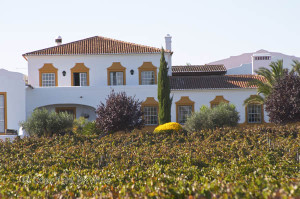 Portugal is a small country but an important wine country. First, it became known for its fortified wines, port wines and madeira. The port has made a comeback in recent years. High-quality Madeira is much appreciated by the wine connoisseurs. But today, Portugal is definitely not only fortified wine. On the contrary. From the north to the south there are vineyards, and both the white and the red wines are of very good quality, from refreshing Vinho Verde in the north to rich and full-bodied Alentejo wines in the south. Our October wine tour to Alentejo takes us first to the Setubal peninsula where we will visit-famous JM Fonseca. In Alentejo we will stay in the adorable little town of Evora and visit fascinating wine growers such as Cortes de Cima, Herdade da Mingorra and Herdade do Rocim.
Portugal is a small country but an important wine country. First, it became known for its fortified wines, port wines and madeira. The port has made a comeback in recent years. High-quality Madeira is much appreciated by the wine connoisseurs. But today, Portugal is definitely not only fortified wine. On the contrary. From the north to the south there are vineyards, and both the white and the red wines are of very good quality, from refreshing Vinho Verde in the north to rich and full-bodied Alentejo wines in the south. Our October wine tour to Alentejo takes us first to the Setubal peninsula where we will visit-famous JM Fonseca. In Alentejo we will stay in the adorable little town of Evora and visit fascinating wine growers such as Cortes de Cima, Herdade da Mingorra and Herdade do Rocim.
Do you want to know more about Alentejo, the wines, the food and much more, come on our Alentejo and Setúbal wine tour 25 to 29 October.
A once-in-a-lifetime South American wine tour: Chile and Argentina
Although the wine is the star in this two-week trip, it is filled with other experiences as well. We will get to know these two countries, Argentina and Chile, South America’s most important wine countries, not only through their wines, but also through their gastronomy, nature, cities and rural areas. We will get to know the French grapes varieties that have found themselves a home on the other side of the globe, malbec and carmenère, and others. We will get to know the climate.
Even though it is hot during the summer, there may be cool nights in some places, which benefit the wine. We will get to know the local food. The tasty meat, often grilled outdoors. The world-famous meat and onion filled empanadas, traditionally baked in special clay ovens. We’ll get to know the cities: Buenos Aires and Santiago de Chile of course, and also Valparaiso, Santa Cruz in Chile and Mendoza, the wine city of Argentina. A highlight in double sense is the bus journey across the Andes. We travel from Mendoza to the Chilean coastal town of Viña del Mar. It will be a day full of contrasts.
Read more on the wine tour to Chile and Argentina 27 January to 11 February 2018.
You can see more of photos and videos from the tour on the Facebook group for the wine tour to Chile and Argentina.
South Africa, amazing wines with quality and ambition | wine tour
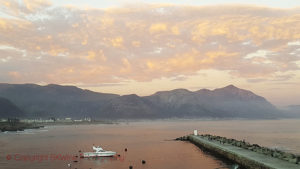 In the mid-1990s the export market opened up for South Africa. And since then we have not stopped drinking their wines. South African wine has changed a lot during these 20 years.
In the mid-1990s the export market opened up for South Africa. And since then we have not stopped drinking their wines. South African wine has changed a lot during these 20 years.
Some associate South Africa with simple, well-made wines. These wines, often shipped in bulk to different countries, make up quite a big part of the production (just like for many other countries). But the more interesting category of slightly more expensive and much more ambitious wines is increasing every year. It is this category we want to show you during this tour to the rainbow nation.
Here you find producers who do wonders with chenin blanc, pinot noir, sauvignon blanc, pinotage and many other grape varieties. We will visit the cool vineyards of Hermanus and Elgin and the warmer ones of Stellenbosch and Franschhoek. The grapes are ripe when we are there and the harvest has begun. The sorting tables will be rolling and the presses will be pressing. All of this will give you a big appetite. Luckily we can promise you amazing meals at the wineries. South African cuisine is also world famous!
Read more on the wine tour to South Africa on 23 February to 5 March 2018.
You can extend your holiday, with our “add-ons”: after the wine tour with safari and before the wine tour with golf.
You can see plenty of pictures and videos from the tour on the Facebook group for the wine tour to South Africa 2017.
Don’t be an egoist! Share with your friends and other wine enthusiasts! Forward the Brief to your friends! Suggest that they sign up for a free subscription !
© Copyright BKWine






